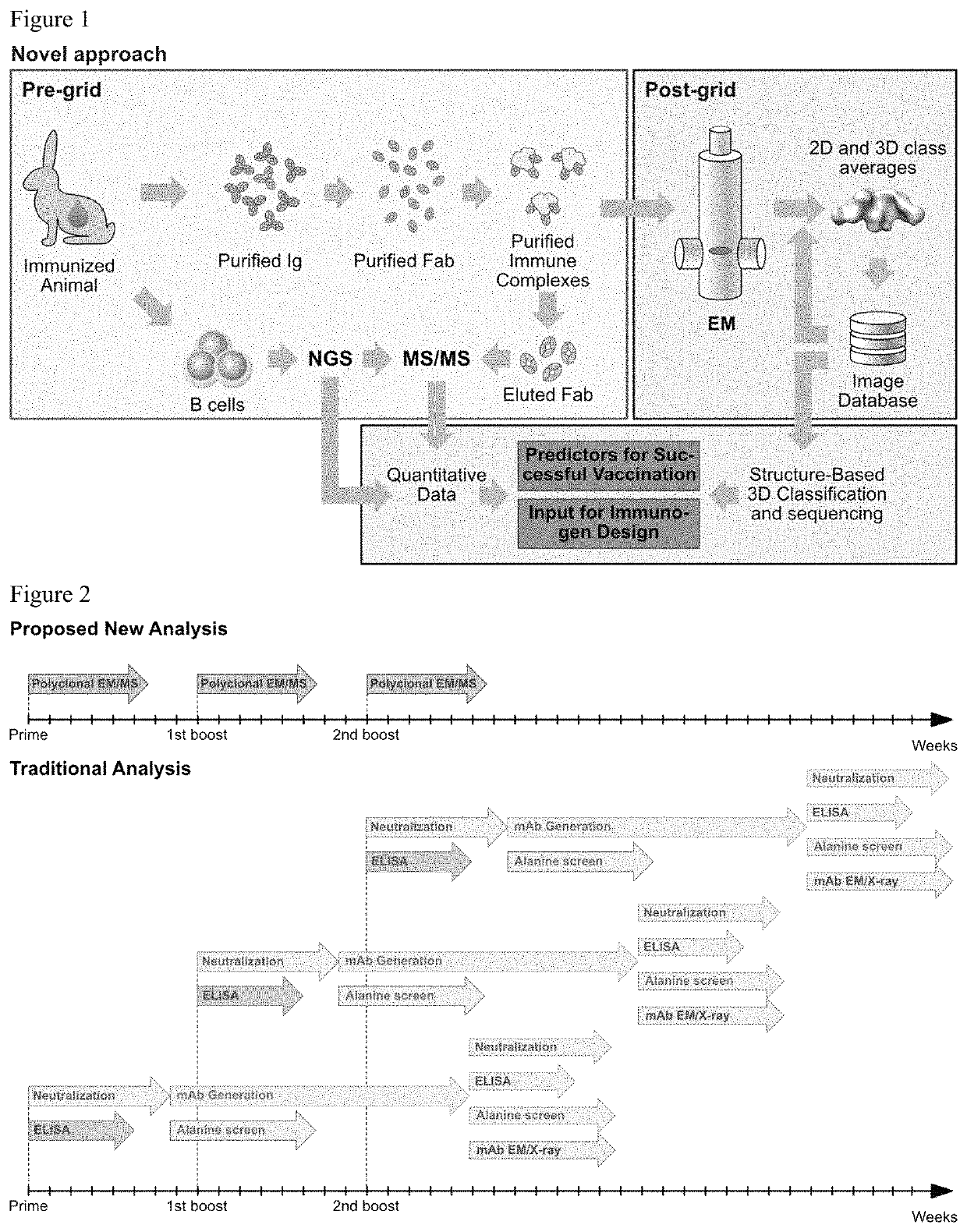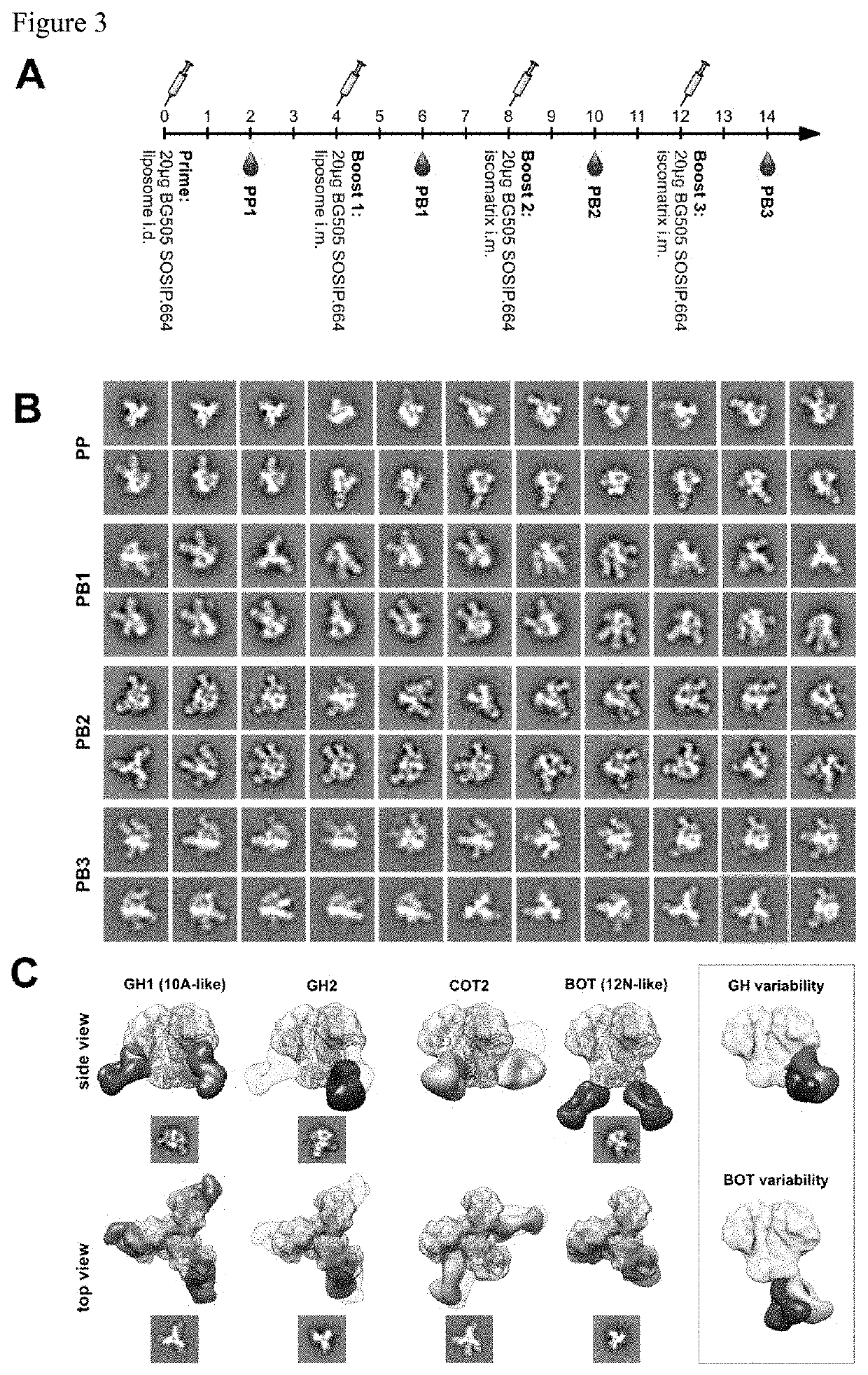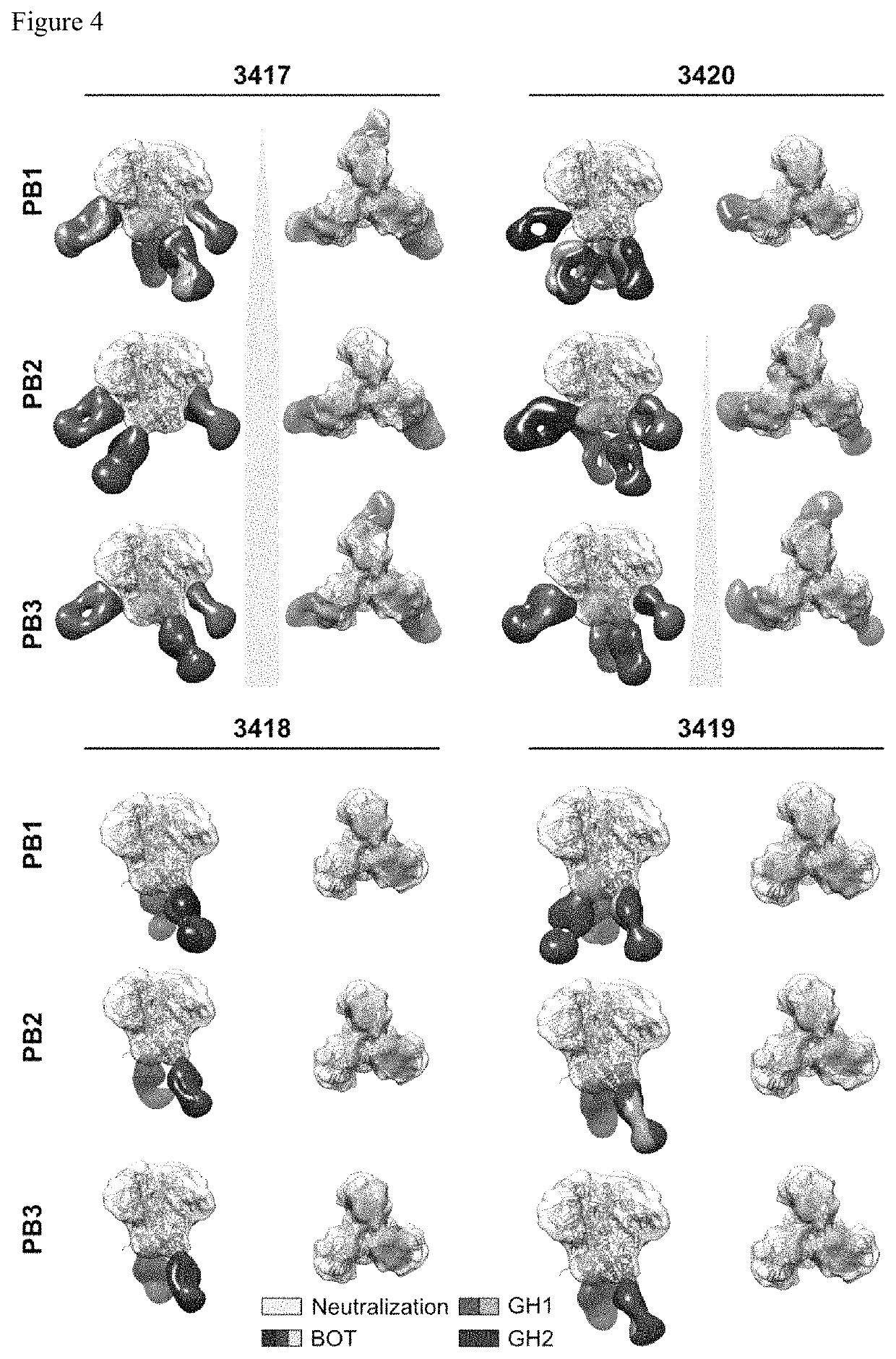Epitope mapping method
a mapping method and epitope technology, applied in the field of epitope characterization and vaccine design, can solve the problems of requiring a considerable amount of pre-existing knowledge to interpret sequencing data, limiting the rate of the iterative vaccine development approach, and considerable limitations in the method
- Summary
- Abstract
- Description
- Claims
- Application Information
AI Technical Summary
Benefits of technology
Problems solved by technology
Method used
Image
Examples
example 1
Generally
[0036]Polyclonal humoral immune responses, for example to natural infection and vaccination, are inherently complex and difficult to characterize using currently available methodologies. Mapping of all epitopes in an immune response is typically incomplete and, therefore, creates a barrier to fully understand the humoral response to infection and hence can hinder rational vaccine design efforts. The present disclosure provides a new methodology that the inventors have applied to characterize polyclonal responses in rabbits to immunization with a trimeric HIV-1 envelope glycoprotein subunit vaccine candidate, BG505 SOSIP.664, using single particle electron microscopy. This approach was able to detect known epitopes and reveal how antibody responses evolved during the prime-boost-boost-boost strategy that ultimately resulted in a neutralizing antibody response. Furthermore, previously unknown epitopes were uncovered, including non-neutralizing epitopes, as well as an epitope ...
example 2
BG505 SOSIP.664 Immunization
[0040]In one embodiment, sera from four BG505 SOSIP.664 immunized rabbits were used, that have been extensively characterized and disclosed by the authors in McCoy et al, Cell Rep. 2016 Aug. 30; 16(9): 2327-2338, and that are referred to as 3417, 3418, 3419, and 3420. Rabbits were immunized three times with BG505 SOSIP.664 and bled two weeks following each immunization (FIG. 3A). Sera obtained are referred to as PP, PB1, PB2, and PB3 for post prime, post boost 1, post boost 2 and post boost 3, respectively. Characterization of the sera using ELISA (FIGS. 9A and 9E) and neutralization assays (FIG. 9B) demonstrated that the antibody responses were comparable to those previously published. As in previous studies, only low titers of binding antibodies were induced following the prime (FIGS. 9A and 9E). The first booster immunization of this immunization regimen drastically increased these binding antibody titers to nearly maximum levels, with little further i...
example 3
Polyclonal Antibody Characterization
[0041]To determine the epitopes of the elicited antibodies without generation of monoclonal antibodies, the inventors devised a strategy to directly image immune complexes formed between the immunogen (BG505 SOSIP.664) and the induced serum antibodies by nsEM. Serum immunoglobulin G (IgG) was purified using a mixture of protein A and G affinity matrix, and processed into fragments antigen binding (Fabs) using immobilized papain to prevent antigen crosslinking and aggregation due to the bivalent nature of IgG. Before nsEM, Fabs were subjected to extensive biochemical and antigenic characterization. Purity of the Fabs was confirmed by SDS PAGE and size exclusion chromatography (SEC). To investigate the effect of the IgG digestion protocol on the biological activity of antibodies, neutralizing titers to the immunogen before and after IgG digestion were determined. As depicted in FIG. 9C, a considerable reduction of neutralizing activity was observed ...
PUM
| Property | Measurement | Unit |
|---|---|---|
| humidity | aaaaa | aaaaa |
| humidity | aaaaa | aaaaa |
| temperature | aaaaa | aaaaa |
Abstract
Description
Claims
Application Information
 Login to View More
Login to View More - R&D
- Intellectual Property
- Life Sciences
- Materials
- Tech Scout
- Unparalleled Data Quality
- Higher Quality Content
- 60% Fewer Hallucinations
Browse by: Latest US Patents, China's latest patents, Technical Efficacy Thesaurus, Application Domain, Technology Topic, Popular Technical Reports.
© 2025 PatSnap. All rights reserved.Legal|Privacy policy|Modern Slavery Act Transparency Statement|Sitemap|About US| Contact US: help@patsnap.com



